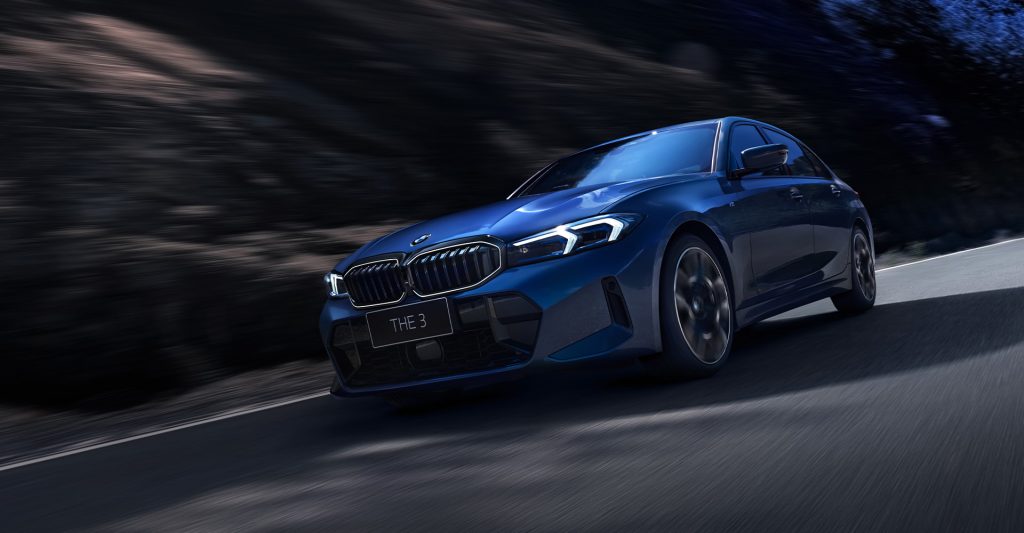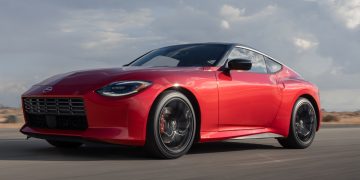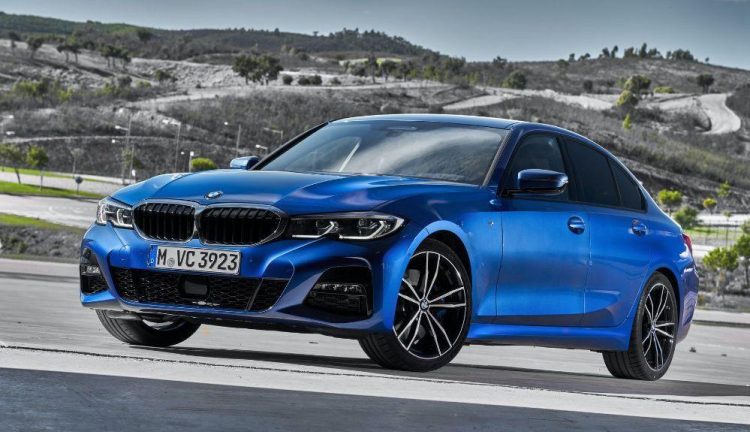Introduction
BMW, or Bayerische Motoren Werke AG, is a name synonymous with luxury, performance, and engineering excellence. The company has carved a niche for itself by combining cutting-edge technology, elegant design, and unmatched driving dynamics to deliver vehicles that have been coveted across the globe. For more than a century, BMW has established itself not only as a leader in the automotive world but also as a trendsetter in terms of innovation, performance, and knowledge.
This article will delve into what makes BMW a global leader in automotive knowledge, exploring the company’s history of technical prowess, engineering breakthroughs, contributions to the luxury car segment, and its vision for the future. We will examine the driving forces behind BMW’s innovation culture, how it has maintained its competitive edge, and how the company continues to influence the global automotive industry.
I. BMW’s History and Legacy of Innovation
To understand what makes BMW a leader in automotive knowledge, it’s essential to first look at its history. Founded in 1916 in Munich, Germany, BMW began as a manufacturer of aircraft engines during World War I. The company’s roots in aviation engineering played a critical role in shaping its approach to automotive technology, particularly when it came to performance and precision engineering.
A. Early Years: Aviation to Automobiles
- The company’s beginnings in aircraft engine manufacturing and how this engineering expertise was translated into the development of high-performance cars.
- The launch of the first BMW car, the 3/15, in 1927, and its role in establishing BMW as an automotive company.
- BMW’s commitment to precision engineering, honed through its aviation roots, and how this shaped its early cars.
B. The Post-War Renaissance: Revival and Expansion
- The challenges BMW faced after World War II, when the company was forced to shift focus from aircraft engines to automobiles due to restrictions.
- The introduction of the BMW 501 in the 1950s, which marked the brand’s shift toward luxury vehicles and the foundation of its reputation in the premium automotive sector.
- How BMW’s engineering knowledge was utilized in expanding its line-up, setting the stage for future success.
C. The Birth of the BMW 3 Series and the Ultimate Driving Machine
- The launch of the BMW 3 Series in 1975 and its immediate success, which defined BMW’s philosophy as “The Ultimate Driving Machine.”
- How the 3 Series revolutionized compact sports sedans, with a focus on rear-wheel drive, sharp handling, and balanced dynamics.
- The cultural impact of the 3 Series, particularly in North America, and its role in solidifying BMW’s brand identity.
II. Technological Advancements and BMW’s Engineering Excellence
One of the cornerstones of BMW’s leadership in automotive knowledge is its continual pursuit of innovation and technological advancement. BMW has consistently pushed the envelope with groundbreaking technology that not only enhances performance but also improves safety, comfort, and sustainability.
A. Powertrain Innovation: From Internal Combustion to Electrification
- Engine Technology: BMW’s contribution to performance-oriented engines, including innovations in straight-six engines, turbocharging, and the development of the TwinPower Turbo technology.
- Electrification: BMW’s shift towards electric mobility, including the introduction of the i3 and i8, the i4 sedan, the iX3 electric SUV, and the iX electric flagship SUV.
- Hybridization: BMW’s pioneering work in hybrid technology, with vehicles like the 330e and the 745e, and how plug-in hybrid systems are integrated into their range.
B. BMW xDrive and All-Wheel Drive Systems
- The development of xDrive, BMW’s advanced all-wheel-drive system, and its impact on driving dynamics.
- How xDrive contributes to better traction, stability, and performance in different weather conditions, making BMW vehicles versatile for all road conditions.
- Integration of xDrive with dynamic stability control and other driving assistance systems for enhanced safety.
C. Autonomous Driving and Connectivity
- BMW’s commitment to autonomous driving, including its ongoing development of Level 3 and Level 4 autonomous systems.
- How BMW integrates semi-autonomous features like adaptive cruise control, lane-keeping assist, and automatic emergency braking into its models.
- The role of BMW’s iDrive and its integration with the cloud, AI, and voice recognition to deliver seamless connectivity and driver assistance.
III. BMW’s Design Philosophy: A Blend of Aesthetics and Functionality
BMW’s design philosophy has always been about more than just creating visually striking vehicles; it’s about achieving a perfect balance between aesthetics, functionality, and performance. This section will delve into how BMW’s design principles contribute to its engineering knowledge and product excellence.
A. The Signature Design Language: From the 328 to the i Series
- BMW’s evolution of design, from the iconic BMW 328 roadster to the futuristic designs of the BMW i3 and i8.
- How BMW maintains its signature kidney grilles, twin headlights, and sculpted body lines while innovating with new materials, aerodynamics, and lighting technology.
- The importance of design in conveying the brand’s performance heritage and future vision.
B. The Role of the BMW M Division
- The history of BMW’s M Division, and its role in translating performance knowledge into road cars.
- The balance between extreme performance and everyday usability in BMW M models such as the M3, M5, and M8.
- How M vehicles maintain BMW’s reputation as a “driver’s car” while incorporating the latest design and technology trends.
C. The Use of Sustainable Materials and Green Design
- BMW’s commitment to sustainability in design, from using recycled materials to exploring bio-based plastics and carbon fiber in its i models.
- How BMW combines performance with sustainability, delivering high-performance vehicles without compromising environmental impact.
- The iX3, i4, and iX as examples of how BMW is shifting towards more eco-conscious design without sacrificing luxury or performance.

IV. BMW and the Driving Experience: What Makes it “The Ultimate Driving Machine”?
A significant part of BMW’s reputation comes from its unique approach to driving dynamics. From the precise handling of its 3 Series to the raw performance of the M cars, BMW has always focused on providing an unmatched driving experience.
A. The Importance of Rear-Wheel Drive
- BMW’s commitment to rear-wheel-drive configurations in its vehicles and how this influences handling, performance, and the driving experience.
- The driving dynamics that come with rear-wheel drive, including better balance, weight distribution, and cornering capabilities.
- How rear-wheel drive continues to set BMW apart from competitors, especially in the luxury sedan and sports car segments.
B. Adaptive Suspension Systems: BMW’s Approach to Comfort and Handling
- How BMW utilizes adaptive suspension systems like Dynamic Damper Control, Adaptive M suspension, and Dynamic Drive to balance comfort with performance.
- The role of these systems in delivering a smooth ride while maintaining the sporty driving dynamics for which BMW is known.
- Real-world applications: How drivers can adjust suspension settings depending on their driving conditions and preferences.
C. Driving Modes and Performance Tuning
- The variety of driving modes available in BMW vehicles (Comfort, Eco Pro, Sport, etc.), and how these modes alter the vehicle’s behavior.
- How BMW tunes engine response, suspension stiffness, and throttle response to provide drivers with a dynamic driving experience.
- The shift from traditional driving to more performance-oriented modes, with a focus on the M Series and their track-focused capabilities.
V. BMW’s Influence on the Global Automotive Industry
BMW’s impact on the global automotive market extends far beyond the design and manufacturing of its own vehicles. Through its technological advancements, design innovations, and commitment to sustainability, BMW continues to set trends that shape the industry as a whole.
A. BMW’s Role in the Evolution of the Luxury Car Market
- How BMW defined the luxury car segment with models like the 7 Series, X5, and the 3 Series.
- The influence of BMW’s performance-oriented luxury vehicles on competitors and how it raised the bar for driving performance and customer expectations.
- BMW’s approach to blending performance with luxury and technology, appealing to consumers looking for a comprehensive automotive experience.
B. BMW’s Global Manufacturing Strategy and Supply Chain Innovation
- The strategic location of BMW’s manufacturing plants around the world and how this enables the company to respond to global market demands.
- The company’s commitment to local production in key markets, such as the U.S. and China, and its impact on global sales.
- Innovations in manufacturing, including the use of flexible production systems and advanced automation techniques.
C. BMW’s Collaborative Efforts and Partnerships
- BMW’s partnerships with companies like Toyota, Daimler, and Intel, especially in the areas of electric mobility, autonomous driving, and digitalization.
- How BMW’s collaboration with Google, Apple, and other tech companies has expanded its digital presence and created an ecosystem for connected cars.
- The importance of cross-industry partnerships in BMW’s strategy to stay ahead of technological trends and market needs.
VI. BMW’s Vision for the Future: Sustainability, Innovation, and Beyond
BMW’s future is focused on continuing its legacy of innovation while navigating the challenges of the evolving automotive landscape, particularly in terms of sustainability, digitalization, and the rise of new mobility solutions.
A. BMW’s Commitment to Sustainability: Electric Future and Green Production
- BMW’s goals for a fully electric lineup by 2030 and its strategy for sustainable mobility solutions.
- How the company is investing in renewable energy for manufacturing and working to reduce its carbon footprint through efficient production techniques.
- The role of the BMW i series, including electric cars and hybrids, in shaping a greener automotive future.
B. The Digital Future: BMW’s Integration of AI and Connectivity
- How BMW is incorporating artificial intelligence, machine learning, and 5G connectivity into its vehicles.
- The development of fully connected cars, autonomous vehicles, and the potential for new mobility services such as ride-sharing and car subscriptions.
- The company’s long-term vision for a fully connected world where cars are part of a larger, smarter ecosystem.
C. Autonomous Driving: BMW’s Roadmap to Level 5
- BMW’s plans to roll out fully autonomous vehicles and its collaboration with other tech firms to develop self-driving technology.
- Challenges in achieving autonomy and BMW’s phased approach to incorporating autonomous systems, with incremental steps towards fully self-driving cars.
Conclusion: BMW’s Role in Shaping the Automotive Future
BMW has solidified its position as a leader in automotive knowledge and innovation through its relentless pursuit of performance, technology, and design excellence. The company’s history, technological breakthroughs, and commitment to sustainability continue to set it apart from its competitors. As BMW moves towards a future driven by electrification, connectivity, and autonomous vehicles, it remains at the forefront of the global automotive industry, continually shaping how we think about and experience mobility.


































Discussion about this post